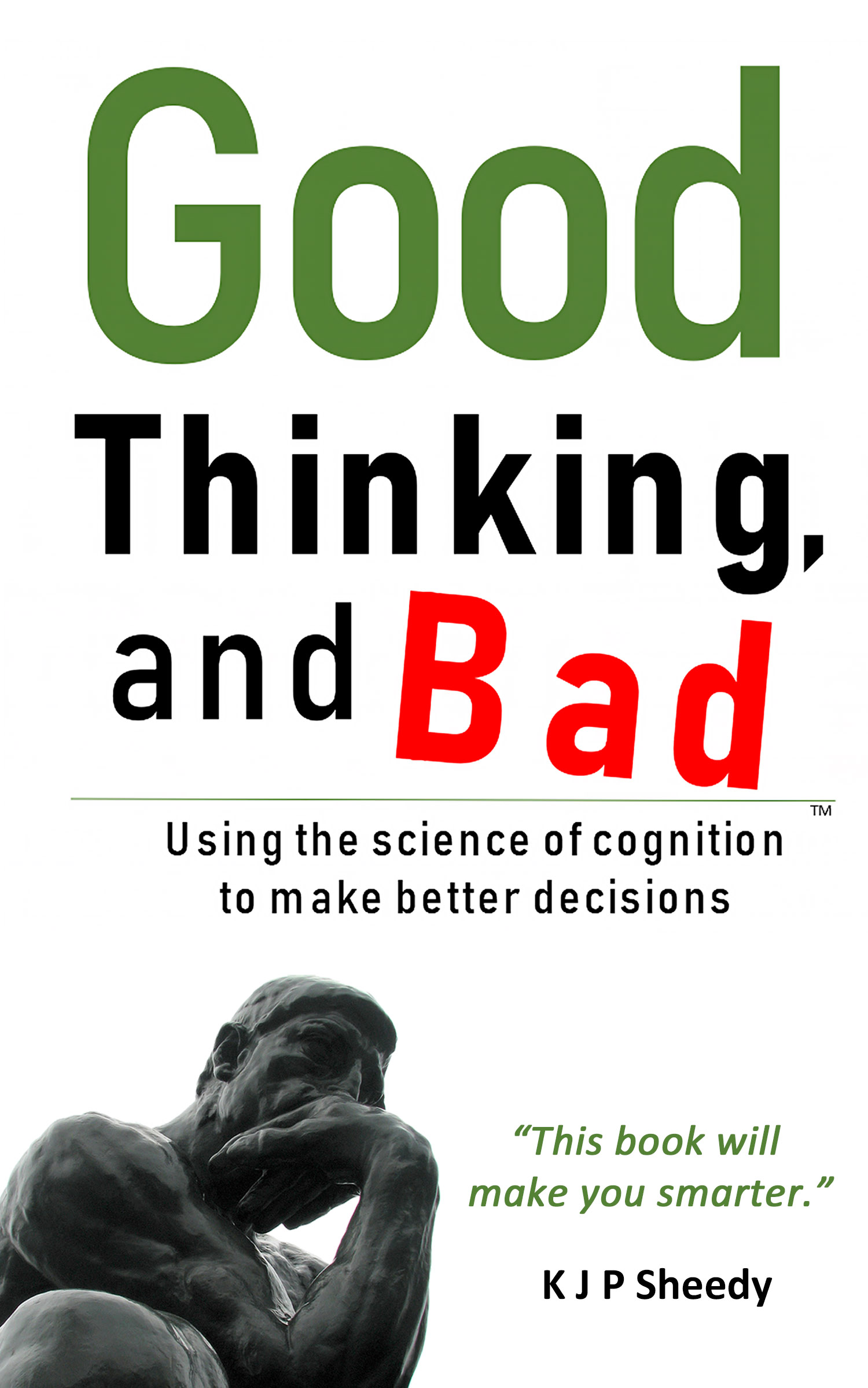Have you ever noticed when trying to solve a problem that sometimes using genuinely innovative thinking just seems to make the problem worse? That might be because the problem needs adaptive thinking to solve it.

KJP Sheedy writes for Female First
So what’s the difference?
Innovators ‘move fast and break things’. Whereas adapters find clever ways to weave around the rules, without breaking anything. Innovators are what you need when fresh, out-of-the-box thinking is needed. They are great when the box is a cage, limiting freedom and closing off options. Adapters, on the other hand, are the answer when the box is a valuable and precious creation that is worth keeping, but you still need to solve the problem that is sitting right in the middle of it.
It is unfair, but typically the Innovators get all the kudos. Everybody loves the story of the defiant and rebellious innovator who risks their reputation and riches to say, ‘The emperor has no clothes, let him log on to net-a-porter.com’. It has even reached the point where the Adapters underplay their valuable skills. They claim to be innovating too, just at a more detailed level. This is nonsense. I think it is time for the Adapters to regain their pride, to stand up and say that more often an adapter is more useful, and that a smart adapter is always worth more than an not-so-bright innovator.
Norman Borlaugh, the father of the green revolution, received a Nobel Peace Prize in 1970 for saving a billion people from starvation. This brilliant adapter developed plant breeding techniques to create semi-dwarf, high-yield, disease-resistant wheat varieties. He was creative and even brave. He resigned when an early boss tried to veto his plans. By comparison, Steve Jobs was certainly a brilliant innovator who changed the world, but I don’t think he was ever considered for a Nobel Peace Prize.
The adapter/innovator effect can also be seen in more tactical decisions. Five-year-old Sophie is not going to have much fun if she stays with her grandparents in their bijoux holiday apartment in the old town in Barcelona. The innovator says, ‘Let’s take the grandparents and Sophie to Disneyland Paris, there is something of everyone there!’ The adapter says, ‘Let’s stay in a hotel on the outskirts of Barcelona where there is a kid’s club and a pool.’ Which is a better answer? It depends on the box. If the grandparents are keen to show off their knowledge of Barcelona, the adapter solution wins.
In popular culture the idea of innovation may have become synonymous with intelligence and creativity, but the science says something different.
The distinction between the innovative and adaptive creative styles was defined by the British psychologist Dr M.J. Kirton, who developed A-I Theory in the late 1970s. The key achievement in Dr Kirton’s approach was the separation of preferred creative style both from intellectual capability and from default-thinking style. Most people are a mix of the two styles with a bias to either Innovator or Adapter. We can all change our creative mode in response to the problem to be addressed. However, we all have a preference. If that preference is strong, we can be that guy with the nice big hammer who sees every problem as a nail.
So it is very useful to know which is your preferred style of problem solving, and how marked your preference is. You could do a full Kirton Adaption-Innovation Inventory (KAI) assessment. If problem solving is at the heart of your day-to-day job you probably should! (Check out www.kaicentre.com) Or, you can use the quick Catz and Dogs test from my book Good Thinking, and Bad: Using the Science of Cognition to make better Decisions. It is a tongue-in-cheek ready reckoner to get a good indication of your preferred style.

It is a quick way to find if you prefer to hang with the Catz or run with the Dogs. Which side are you on? Despite what you might think, the science says that there does not seem to be any correlation between gender and KAI creative style.
Doing this exercise with a team of workmates is a very useful way of surfacing and dealing with any tensions caused by differences in creative style. For example, programme managers tend to be innovator Catz while client managers tend to be adapter Dogs.
In any case the next time you hear the word ‘innovation’ used too many times in a meeting, remember that far more problems are solved with adapter style creativity. It’s just that the adapter Dogs don’t make such a fuss.
For an interactive version of the Dogs & Catz measure go to www.good-thinking-and-bad.com/catzanddogs.

Good Thinking, and Bad: Using the Science of Cognition to make better Decisions by KJP Sheedy incorporates the latest findings in cognitive science to provide a practical guide to improving thinking. It is out now in paperback through Navidus Consulting priced £9.99 on Amazon UK. Find out more about the book in our exclusive Q&A with KJP Sheedy, below:
Female First (FF): Your new book is out now. Tell us about it and who it will appeal to.
KJP Sheedy (KS): Good Thinking, and Bad: Using the Science of Cognition to Make Better Decisions is a popular science book with a pragmatic purpose. It brings together lots of recent cognitive science and explains how to use those insights to improve day-to-day decision making. Everyone makes decisions, and sometimes they are important ones. So if you are interested in psychology and science and you want to be better at thinking, this book is for you.
FF: How long did you spend researching the book and what did that research involve?
KS: I’ve been interested in the subject of how people think since I was a teenager and used to read psychology books which were around the house as both my mother and sister studied it at third level. But I started researching this book in earnest in 2016. The research involved sketching out a taxonomy of thinking paradigms based on what I already knew, then developing that taxonomy by reading related popular science books and the original research papers that were relevant. I also had some email conversations with experts in the field to test my thinking.
FF: Why did you write it?
KS: I wrote the book I would have loved to find in my late teens or early twenties. I want to make sure that anyone who is interested in thinking about thinking, and being better at thinking, has access to a coherent synopsis of the latest science on the subject, clearly laid out and with practical tips on how to apply the ideas.
FF: The book suggests that we’re all born with a set of thinking skills that could be flawed. What do you mean by this?
KS: It is more that we all have a set of really powerful thinking capabilities which have evolved over millennia and which we have learned to use mostly by trial and error. These very cool tricks deliver good thinking a lot of the time. But sometimes these thinking patterns, or paradigms, can trip us up. If we recognise these Thinking Paradigms when we are most likely to use them, we can avoid the bad thinking and enhance the good thinking effects.
FF: How do we go about improving our thinking? What techniques do you recommend?
KS: First realise that we are already very good at thinking. Then get an understanding of how we go about this most vitally important and powerful activity. In particular, when we make decisions, different paradigms come into play at different points in the decision cycle. Learn which paradigms are used at which part of the decision process (this is set out clearly in my book). For example the Narrative Paradigm, our innate ability to make a coherent story out of a few disconnected facts, is very important when we are defining a problem. If we are aware of how it works we can take these intuitive narratives apart and test if they really hold water.
FF: The book suggests that by following these techniques we can all become smarter. Really?!
KS: Well it will not actually increase you IQ - sadly this is very hard to improve once you are an adult. But being smarter is about improving the quality of decisions that you make. Using these techniques will get you to better decisions, and therefore better outcomes, and that means you are smarter.
FF: Do the techniques work for everyone?
KS: Yes. Literally everyone will benefit from having this information in their heads. Whether your creative style is innovative or adaptive, whether you are introvert or extrovert, whether you are of average intelligence or high intelligence, thinking about thinking will make you better at thinking. It is a virtuous circle.
FF: So does everyone have the potential of becoming a genius?
KS: What is a genius? I know some terrifyingly intelligent people who couldn’t organise a party in a party shop, and I know some people with normal intelligence who make good decisions most of the time. If the majority of your decisions are good ones, a lot of people are going to recognise you that are smart in a pragmatic way. That might be a bit better than being a genius.
FF: What’s next for you?
KS: There are two sides to my future plans for Good Thinking, and Bad.
First is the ‘change the world’ campaign. I think everybody should think about thinking because it makes them better thinkers and hopefully better people. So I plan to give fee copies to any school library that request it (one for every 20 print copies sold) Also, I plan to have Spanish and Chinese translations available in the next month or so.
The other side of the plan is to launch a Good Thinking, and Bad training and consulting proposition. This will allow organisations to invest in their people both to improve their thinking skills and to establish a common language to enable better challenge and discussion of ideas in the working environment.
Add these to promotion activities for the book and I think I’ll be pretty busy.
KJP Sheedy is the founder of Navidus Consulting . Further information about Good Thinking, and Bad: Using the Science of Cognition to make better Decisions can be found at www.goodthinkingandbad.com.

